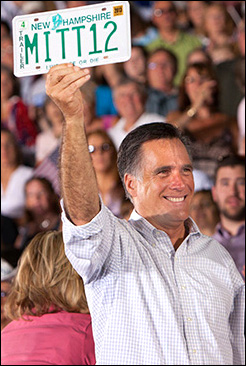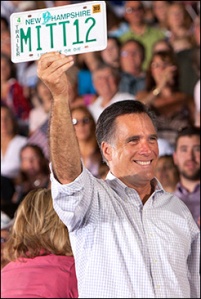A pair of under-the-radar Senate races are now becoming competitive, recent polls indicate. In Arizona and Pennsylvania new publicly released surveys put a Democratic and Republican underdog in the national spotlight for the first time.
In the Grand Canyon State for the seat of retiring Sen. Jon Kyl (R), polling results from Democratic nominee Richard Carmona, the former U.S. Surgeon General under President George W. Bush, places him in a virtual tie with his favored Republican opponent, Rep. Jeff Flake (R-AZ-6). Anzalone Liszt Research, polling for the Carmona campaign, surveyed 600 likely voters over Sept. 18-23 period and projected 44-43 percent results. Other recent surveys also put the Arizona seat in play, but their margins still favor Flake beyond the margin of error. Rasmussen Reports publicized a study earlier this week giving the congressman a six-point, 47-41 percent lead, and the international research firm YouGov posted mid-September data that projected the Republican nominee to be enjoying a similar 43-37 percent margin.
Flake, a six-term congressman from Mesa, Ariz., is best known as one of the leaders of the movement to end spending earmarks. Opposed in the late August Republican primary, he easily defeated wealthy businessman Wil Cardon. Many Democratic strategists believe that Dr. Carmona, an Independent-turned-Democrat who President Obama and Senate Majority Leader Harry Reid encouraged to run, can score an upset win. While current polling is beginning to show serious competition, voting history nonetheless yields a conclusion that the seat will stay red.
In the Keystone State of Pennsylvania, we see another Senate race growing tighter as we inch closer to Election Day. Incumbent Democratic Sen. Bob Casey Jr. has maintained a sizable lead throughout the campaign, however, his challenger, a self-funding former Democrat, appears to be making a move. Recently the seat has moved from “likely” to “lean Democratic” proving that GOP nominee Tom Smith is gaining ground against the incumbent. With President Obama polling well in Pennsylvania, Smith will have to run substantially ahead of his own presidential nominee to record a surprise win, making his uphill task even more difficult.
Tom Smith is a former coal company chief executive officer who handily won the Republican primary with multi-million dollars in personal expenditures. Smith is making a strong issue of his coal background and using recent plant closings as a way to draw a contrast between himself and Casey. Smith will attempt to take advantage of Obama’s Cap & Trade legislative initiative that proved so lethal to Democrats in the 2010 elections. Pennsylvania is the nation’s fourth largest coal producer, providing over 5 percent of the nation’s aggregate total.
Recent polls do suggest positive movement for Smith, leaving the Democrats a bit uneasy. A Quinnipac University poll (1,180 likely voters, +/- 2.9% error factor) released this Wednesday showed Sen. Casey leading the Republican just 49-43 percent, a drop all the way from 55-37 percent (a net swing of 12 points) in late July. Another contemporary Susquehanna Research survey published in the Pittsburgh Review Tribune newspaper also showed a similar split with Casey only leading 46-41 percent.
It’s clear from the political metrics that Smith is making gains, but is it too little, too late? With Obama consistently leading Mitt Romney here and Sen. Casey maintaining at least a small edge over challenger Smith, the patterns still suggest the Pennsylvania Senate seat will remain in the blue column.






